Today's world is greatly impacted by harsh synthetic chemicals and pollution, which is why nature has given us its timeless treasure of herbal elements. The review primarily focuses on a variety of herbal components that may have photoprotective properties. Sunburn is mostly caused by ultraviolet radiation, which also increases the risk of developing deadly skin cancer. Herbal compounds with sunscreen properties can be used to prevent the penetration of UV radiation. Herbal remedies are more widely available, less expensive, and have fewer adverse effects than synthetic ones. They are also effective in treating chronic diseases. Basically, because they have antioxidant properties, herbs that include vitamins A, C, and E, flavonoids, polyphenols, carotinoids (including lycopene and ?-carotene), and phenolic acids improve photoprotection. These herbal compounds improve skin protection from damaging UV rays, neutralize reactive oxygen species (ROS), and prevent the development of free radicals. The active ingredient in many herbs that provides photoprotection is the main subject of this review. This paper concludes the research of the chemical components found in different herbals that have a UV shielding effect, as well as the destructive and harmful effects of UV rays and the types of UV radiation.
UV radiation, Antioxidant activity, Sun Protection Factor, Photoaging and Reactive Oxygen Species (ROS).
Ideal Properties of Sunscreen:
- Rather odorless, stable to heat, light, and perspiration, and preferentially absorbing light in the 280 – 320 m? range.
- Be non-irritating, non-toxic & non-sensitive.
- Has the capability to maintain its sunscreening rates for several hours.
- Non-staining.
- Not rapidly absorbed.
- Maintain impartiality.
- Be readily solvable in the right forms of vehicles.
- Water resistance.(6)
Classification:
Sunscreen agents are categorized according to their composition and mode of action. UV rays are blocked, reflected, and scattered by sunscreen chemicals in a variety of ways.(7)
- Organic Filters
Organic filters are made of substances that, depending on their chemical makeup, will absorb particular UV light wavelengths. The low-energy filter transforms into a high-energy filter.(8)The filter's capacity to process the energy it has absorbed will determine which of the three processes listed below can take place from this high-energy level:
- Photostable filter: This type of filter returns to the low-energy level (ground state) after dissipating the absorbed energy as heat energy into the atmosphere.It is effective in reabsorbing ultraviolet light.
- Photounstable filter: Its chemical structure changes or degrades as UV light is absorbed. It is unable to use UV energy once more.
- Photoreactive filter: When in its excited form, the filter interacts with nearby molecules, such as other proteins and lipids found in sunscreen, hair, and oxygen. Reactive species are produced as a result, which could have unfavorable biological impacts. UVB and UVA filters are two more categories for organic sunscreens:
- UV Bfilters:
a. Padimate O derivatives of PABA
b. Cinnamates: Octinoxate, Cinoxate
c. Salicylates: Octisalate, Homosalate, Trolamine salicylate
d. Octocrylene
e. Ensulizole
a.Oxybenzone, Sulisobenzone, and Dioxybenzone are examples of benzophenones (UVB and UVA2 absorbers);
b.avobenzone, also known as Parsol 1789 (UVA1 absorber)
c.meradimate (UVA2 absorber).
3. Ecamsule (Mexoryl SX), Silatriazole (Mexoryl XL), Bemotrizinol (Tinosorb S), and Bisoctrizole (Tinosorb M) are examples of newer generation broad spectrum (UVA + UVB) filters.(9)
UV rays are reflected and scattered back into the surrounding environment by inorganic filters. It serves as a physical defense against UV rays. Because it covers the whole UV spectrum, these filters are regarded as broad spectrum. Typical inorganic filters include the following:
a. zinc oxide
b. titanium dioxide
c. Additional substances include talc, ichthammol, kaolin, calamine, red veterinary petroleum, and iron oxide.(6)
- Systemic Photoprotective Agents
Since systemic drugs protect the entire body and are expected to solve the substantivity issue, which is crucial for topical products, they have been studied for photoprotection.
PABA, indomethacin, retinol, steroids, psoralen, antimalarials, and antioxidants such as beta-carotene, vitamin A, vitamin C, and vitamin E are among the oral medications that have been explored. Sunscreens are more effective at preventing sunburn than antioxidants.(10)
Mechanism Of Action:
The stratum corneum, epidermis, and dermis all deplete enzymatic and non-enzymatic antioxidants as a result of UV-mediated photooxidative damage that travels through these layers to the dermal capillaries. Melanin and its precursors will undergo photooxidation, causing instant and long-lasting pigment darkening. Additionally, several enzymes, including as hemooxygenase, ferritin, glutathione peroxidase, catalase, etc., are upregulated in response to solar light. Photooxidative reactions are triggered by UV rays, which also activate protein kinase C and reactive oxygen species. These substances subsequently react with proteins, lipids, and DNA to form cyclobutene pyrimidine dimers, which are the cause of erythema, edema, skin sunburn, and cell death. Additionally, UV radiation activates cytokine and growth factor receptors on the skin's keratinocytes and fibroblasts, changing the manner in which cell proliferation is regulated.(6)
Importance Of Herbal Sunscreen:
Some regulatory bodies have reported evidence that synthetic sunscreens provide quick sun protection, but at the risk of damaging skin. Underweight baby girls were born to women who had high amounts of oxybenzone in their bodies, according to a 2007 Centers for Disease Control and Prevention [CDC] study. One of the active ingredients in synthetic sunscreens that causes the harm mentioned above is oxybenzone. According to the Therapeutic Goods Administration [TGA] in Australia, zinc oxide and titanium dioxide, which are typical ingredients in synthetic sunscreens, could harm healthy cells by forming free radicals when exposed to light. In place of PABA, an early component of synthetic sunscreens, zinc oxide and titanium dioxide have been shown to carry some risk, including irritation and skin discolouration.(11)
Since herbal creams have less or no negative effects than chemical-based ones, demand for them has grown. There are no adverse side effects, allergic reactions, or comedogenic effects from using herbal ingredients. Since nature has given us an enduring treasure trove of herbal ingredients, these are more effective and rich in stability, safety, purity, affordability, and availability in a wide range of plants. Since the skin is the main area exposed to the elements, people in rural areas still utilize natural remedies (plant extract) for traditional cosmetics.Because of their ability to absorb UV radiation, natural materials have recently been explored as possible sunscreen resources.(12)They have been shown to have anti-oxidant, anti-inflammatory, and immunomodulatory properties in addition to their ability to absorb UV light.(13) Herbal extracts are contained in a significant number of commercially available sunscreens, however they do not function as sun filters, according to extensive research on the role of natural compounds as photoprotective substances. There is currently no legally certified commercial sun filter since, in spite of multiple scientific publications, no government has approved any natural chemical or vegetable extract as an ultraviolet filter for sunscreen.(14)
Agents Of Natural Sunscreen:
Aloe barbadensis miller (Family -Asphodeloideace) Aloe vera:The leaves of A. barbadensis and Aloe vera plants are used to make aloe vera gel. Aloe vera gel is widely used in cosmetics and hygiene due to its moisturizing and revitalizing properties. By preventing UVA and UVB rays, it protects skin. natural moisture balance Acemannan is a D-isomer mucopolysaccharide that promotes the production of collagen and fibroblasts, which in turn speeds up the healing process. Aloe extracts and aloin from the plant can be applied as sunscreen to the skin and hair because of their spectrophotometric peaks at about 297 nm.(15)(16)
The study's goal was to determine whether aloe vera juice might protect Asian hair that was chemically colored, particularly black and grey. Aloe vera juice-treated hair offered protection from UV radiation, but tryptophan content measurements revealed that untreated hair exposed to the outside had higher chemical damage.(17)

Lycopersicon esculentum (Family - Solanaceae) Tomato: The main source of lycopene is the fruit of the tomato plant (Lycopersi-conesculentum), which is also being studied for its antioxidant qualities in the pharmaceutical and cosmetic sectors. It is more than simply a color; it is a potent antioxidant that combats free radicals created from oxygen that live beneath the skin's outermost layer and lipid membrane. Lycopene shields the skin from UV-induced erythema, scavenges lipid radicals, and inhibits lipid peroxidation. In addition to strengthening defenses against the short- and long-term (burns) and cancer-causing effects of sun exposure, lycopene can reduce the harmful effects of UV radiation on skin.(18)
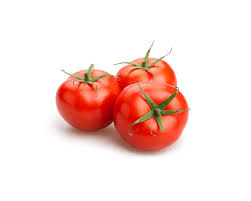
Punica granatum (Family- Lythraceae ) Pomegranate: Pomegranate (Punica granatum) juice contains the main antioxidant polyphones, ellagannins and anthocyanins. The efficacy of Surround1 (Ag Nova Tech., Australia), Parasol1 (Crop Care, Australia), and Anti-stress-5001 (EnviroShield Products Co., USA), the third commercial sunblock therapy, was also investigated. at order to shield the pomegranate from sunburn, fruit was planted at Condobolin, New South Wales, Australia. The results showed that sunscreen treatments significantly improved the category of severely burnt and damaged fruit (p = 0.05). The percentage of fruits with serious damage decreased statistically significantly when Surround1 (14.7%) and Parasol1 (12.8%) were applied to fruit compared to the control fruit (25.8%); however, the anti-stress 5501 (19%) had no discernible impact.(19)(20)

Camellia sinesis (Theaceae family) Green Tea: Green tea is made from the fresh leaves of the Camellia sinensis plant. Polyphenols appear to be the primary mediators preventing chemotherapy. Green tea contains four major types of polyphenols: (-)-epicatechin (EC), (-)-epicatechin-3-gallate (ECG), (-)-epigallocatechin (EGC), and (-)-epigallocatechin-3-gallate (EGCG). " Caffeine, phenolic acids, flavonoids, and the alkaloids theophylline and bromine are also present. It has long been hypothesized that green tea polyphenols offer protection against UV-induced skin cancer, according to Wang's research. Green tea can be utilized as soon as feasible after exposure to help guard against at least some of the biological effects of UV radiation. It is also useful when taken systemically. Green tea absorbs UVB and UVA rays at a low rate.(21)(22)(23)
It prevented UVB from penetrating leukocytes (neutrophils/macrophages), which may have generated reactive oxygen species (ROS) and metabolites of prostaglandin (PG). Topical EGCG (3 mg/2.5 cm2) therapy effectively decreased UVB-induced leukocyte infiltration and myeloperoxidase activity prior to UVB (4 MED) exposure to human skin.(24)(25)
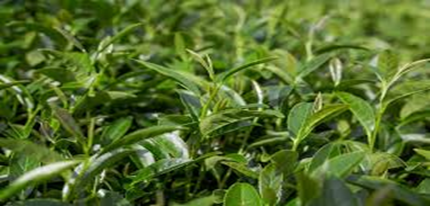
Vitis vinifera (Family -Vitaceae) Grapes: According to Vitis vinifera, 60–70% of grape fruit is made up of polyphenols. Another polyphenolic phytoalexin (trans-3, 5, 4-trihydroxystilbene) that is present in grape seeds and skin is resveratrol. It is a superb antioxidant and has strong anti-inflammatory and anti-proliferative properties.(26)

Prunus dulcis (Family -Rosaceae) Almonds: The commercial term for almonds is almonds. Seed are abundant in polyphenolic compounds, which include particularly flavonoids and phenolic acids. The skin extract from this plant was tested to see how well it protected against UVB rays. Changes in glutathione levels and lipid peroxidation were investigated after the mice were exposed to UVB light. Animals that received the produced cream topically two hours prior to and following radiation showed reduced lipid peroxidation and increased glutathione levels. The results show that topical administration of the cream formulation has significant antioxidant and anti-photoaging properties.(27)(28)(29)

Crocus sativus (Family- Iridaceae) Saffron: Gul Mohammad Zadeh SH et al. evaluated saffron's anti-solar activity. The pollen of the saffron plant (Crocus sativus) was dried and ground into a powder using a grinder. The experimental compositions included lotions with 2, 4, and 8% ground saffron, a homosalate (8%) lotion reference, and a control lotion base without any saffron. The FDA claims that lotions containing saffron were produced in a manner similar to that of the homosalate lotion reference. The formulations' sun protection factors (SPFs) were determined using an in vitro spectrophotometry approach. The study found that saffron can be used as a natural UV absorber.(30)

Emblica officinalis (Family- Phyllanthaceae) Amla: Amla or Emblica officinalis Gaertn, is a nutrient-dense food that is high in vitamins C, minerals, and amino acids.(31) Numerous phenolic chemicals are also present in it. Amla extract is thought to be beneficial for natural dermal care since it has strong antioxidant qualities and protects human dermal fibroblasts from oxidative stress.(32) According to recent reports, amla extract affects human skin fibroblasts, particularly the formation of matrix metalloproteinases (MMPs) and procollagen. Gallic acid and elaeocarpusin are among the 29.4% polyphenols and 2% ascorbic acid found in the aqueous extract of dry amla powder. Amla extract stimulates the synthesis of procollagen and increases the mitochondrial activity of human skin fibroblasts. Amla has therefore been used for skin care from ancient times because of its possible medicinal, cosmetic, and mitigating properties.(33)

Piper longum (Family- Piperaceae) Long pepper: Piper longum L., a member of the Piperaceae family, is widely distributed in the Philippines, India, and Indonesia. It consists of a spike of fruits producing a structure about 4 cm long and 6 mm in diameter. The fruit (pepper) has a resin, 5–95% crystalline alkaloids (piperine and piperettine), and 1–2.5% volatile oil. Because of its potent antioxidant properties in vitro and in vivo in mice, piperine, which is derived from this plant, has been employed as a component in Ayurvedic formulations. Piperine is applied topically in a cream basis to cure sunburn conditions because of its antioxidant qualities.(34)

Sesamum Indicum (Family- Pedaliaceae) Sesame: A herb is Sesamum Indicum (Pedaliaceae). It exhibits strong antioxidant qualities. The main active ingredients of sesamum indica, a brain tonic and antioxidant that can help with amnesia, a variety of skin issues, and memory enhancement, include protein, carbs, vitamins, riboflavin, nicotinic acid, pantothenic acid, and ascorbic acid. Oleic and linolic acids are abundant in sesame oil.Sesamin and sesamolin are the two main ingredients, and sesamum oil has antioxidant properties.(35)
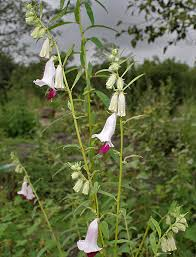
Glycyrrhiza glabra (Family -Leguminaceae) Licorice: Glycyrrhiza glabra's roots and rhizomes effectively block UV rays from the sun. The saponin glycosides found in the root, primarily glycyrrhetinic acid and stearyl glyryrrhetinate, may be responsible for the protective action of liquorice extract. Its antioxidant properties shield vulnerable skin from oxidative stress brought on by UV radiation exposure.(36)
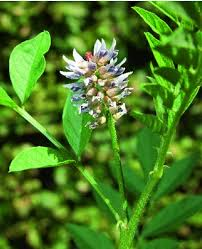
Curcuma longa (Family- Zingiberaceae) Turmeric: Turmeric has been utilized as a remedy against aging and for its culinary qualities in Indian curries. After being given orally to mice, an aqueous extract of the rhizome showed antidepressant effect, which is linked to the suppression of brain MAO type A .The treatment of AD heavily relies on antidepressant action.(37)
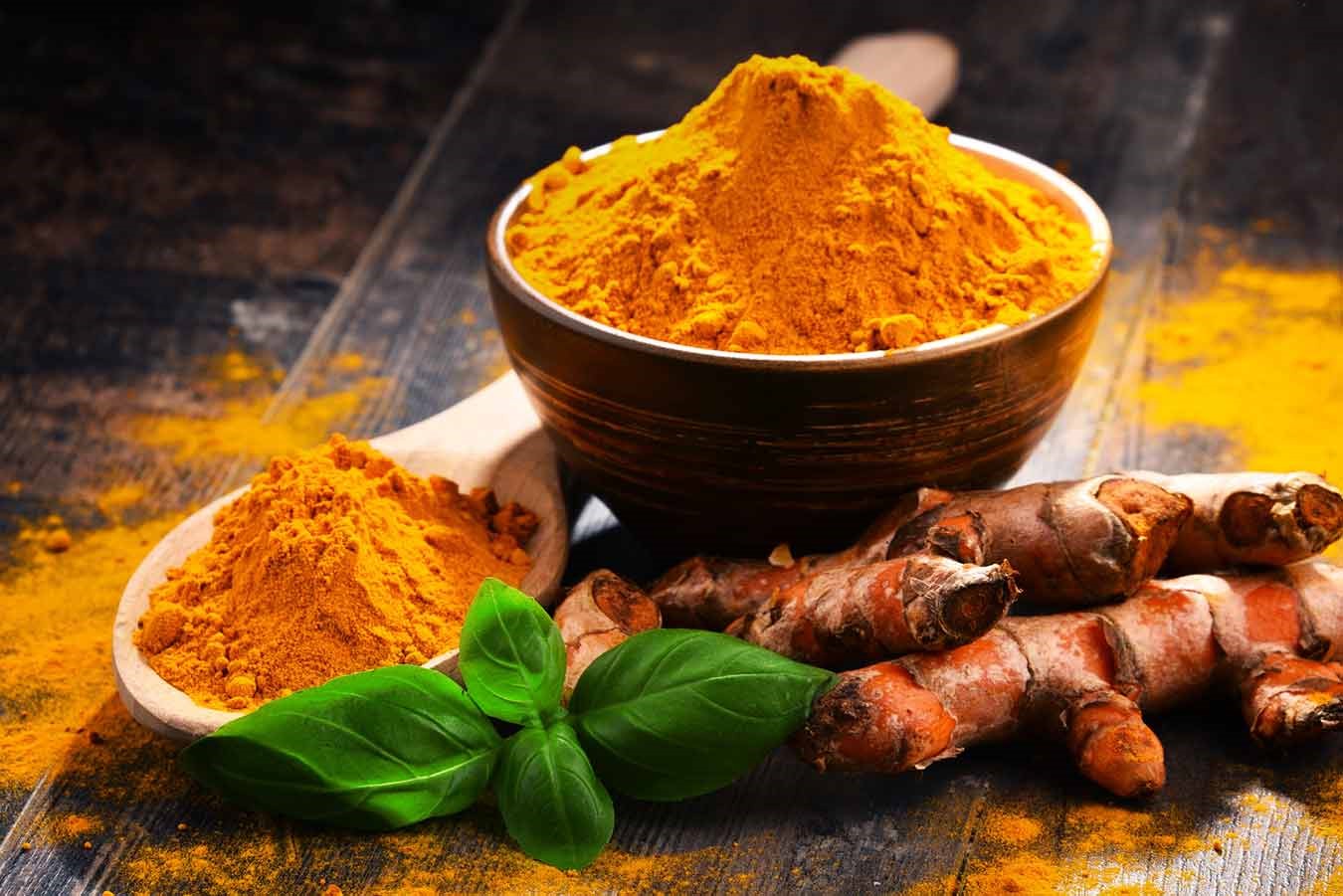
Dacus carota (Family- Apiaceae) Wild Carrot: One of the most significant root vegetable plants in the world is the carrot. More specifically, singlet oxygen, superoxide anion, and hydroxyl radicals are effectively quenched by ? carotene, a carotinoid.(38) This highlights how carrots are UV-protective. Other components include omega 3, 6, 9, and oxyacetylene. Carrot seed oil, stigma sterol, ?-sitosterol, vitamin A, and campesterol all have cytotoxic effects against mutagens, nourish and revitalize skin, and effectively boost the body's immunological response to UV radiation.(39)

Rubia cordifolia (Family- Rubiaceae) Manjistha: Indian madder is a common name for it. Indian madder is also known as manjistha. Indian madder's main chemical components include flavonoids, free alizarin, munjistin, puroxanthin, pseudo purpurin, and glycoside. According to reports, these ingredients can help heal skin disorders like sunburn, eczema, allergies, hyperpigmentation, and uneven pigmentation. Manjistha help treating blood-originating diseases in purifying the blood. It enhances skin complexation .(40)

Rosa damascene (Family- Rosaceae) Damask rose: The blooms are utilized in cosmetics and fragrances because of their exquisite smell. Rose oil is one of the most complex chemical constituents; it mainly comprises citronellol, geraniol, nerol, stearpoten, phenyl ethanol, and small quantities of nonanal and linalool. Cream or lotion infused with rose oil. It is good for dry, sensitive, and older skin since it hydrates and moisturizes the skin while stimulating it. It helps repair damaged capillaries on the skin, prevent inflammation, and lessen skin redness. According to reports, it has anti-UV radiation penetration properties.(41)

Citrus limonum (Family- Rutaceae) lemon: The fruit of the lemon is used for producing lemon oil. Lemon oil is watery in viscosity, pale greenish yellow in color, and has a strong, fresh scent. ?-pinene, camphene, ?-pinene, sabinene, myrcene, ?-terpinene, linalool, ?-bisabolene, nerol, neral, and ascorbic acid are the primary chemical constituents of lemon oil, and they all have strong antioxidant properties. Lemon oil is used to treat acne, clean oily skin and hair, remove dead skin cells, and have an emollient effect on skin cells that have been burned by the sun.(39)
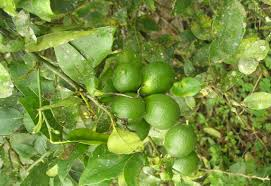
Rhodiola rosea (Family- Crassulaceae) Rose root: One plant that thrives in cold climates worldwide is rose root. About 140 chemical substances have been detected by scientists in the underground sections.(42)Phenols, organic acid, terpenoids, phenocarbonic acids, flavonoids, antrachinous, rosavin, rosin, and alkaloids are all found in rhodiola. In addition, there are numerous other phenolic antioxidant constituents, such as kaempferol, gallic acid, quercetin, proantocyanidins, and chlorogenic acid. It is said to exhibit prevention of UV penetration because of the aforementioned chemical components.(43)

Oil As Sunscreens:
Numerous oils that come from natural sources have been discovered by researchers to have sunscreening properties and to hinder the penetration of UV radiation.
Sesame oil (Family- Pedaliaceae) Sesamum indicum: For thousands of years, humans have been using sesame oil as a therapeutic oil. Sesame oil has suppressed the growth of leukotrines, prostaglandins, and malignant melanoma, a kind of skin cancer, in vitro. It possesses strong antioxidant properties. This oil will neutralize free oxygen radicals in the tissues under the skin. It has stearic, oleic, linoleic, palmitic, and palmitoleic acids as well as eicosenoic acid. Vitamin E is abundant in sesame oil. It is said that sesamin and sesamol replenish the skin's moisture content, preserving its suppleness and suppleness.(43)
Olive oil (Family- Oleaceae) Olea europaea:The fat that comes from olive fruit is called olive oil. Triglyceride esters of oleic and palmitic acids, as well as trace amounts of squalene, sterols, phytosterols, and tocosterols, make up olive oil. Additionally, it includes polyphenols like hydroxyl tyrosol and tyrosol esters, such as oleocanthal and oleuropein. There are also lignans and flavonoids of some kind. For many years, olive oil has been utilized as a natural skin care solution. In topical sunscreen preparation, squalene serves as a moisturizer, antioxidant, and a practical means of transporting other ingredients.(38) (44)
Castor oil (Family-Euphorbiaceae) Ricinus communis: A vegetable oil made from castor seeds is called castor oil. The liquid is colorless to pale yellow. Ricinoleate makes about 90% of the fatty acid chains in this triglyceride. The other crucial component is oleate and linoleates. Castor oil is a well-known source of monounsaturated, 18-carbon fatty acid, or recinnoleic acid.(38) Castor oil helps with a wide range of skin issues, including sunburn, acne, dry skin, stretch marks, and more. It hydrates and softens the skin by penetrating deeply into the skin and promoting the synthesis of collagen and elastin. It makes skin smooth, silky, and youthful by repairing and rejuvenating it.(43)
Argan Oil (Family- Sapotaceae) Argania spinosa: Argan oil is a plant oil made from the kernels of the argan tree and is prized for its many medicinal, nutritional, and cosmetic qualities. It contains phenols, carotenes, squalene, and tocopherols (Vitamin E). The main natural phenols in argan oil are caffeic acid, oleuropein, vanillic acid, tyrosol, and catechol. Unroasted argan oil has long been used as a skin care product and as a cosmetic oil due to its moisturizing, nourishing, UV protection, and antioxidizing qualities.(45)


 Reshma Lohkare *
Reshma Lohkare *
 Shruti Nagrale
Shruti Nagrale
 Mahendra Gunde
Mahendra Gunde
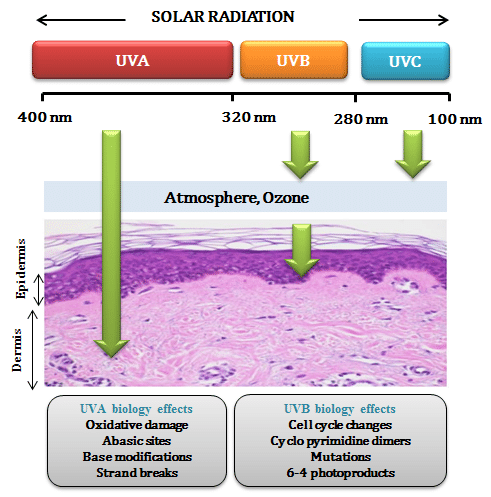



















 10.5281/zenodo.14464895
10.5281/zenodo.14464895